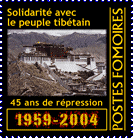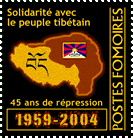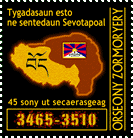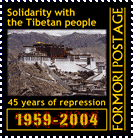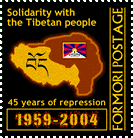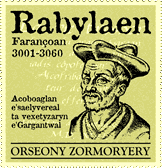Stamps of the Year 3510Although it has neither its own currency nor any proper postal service, during Summer 3508 (2001), the Formori Community decided to set up a philatelic service in charge of issueing commemorative stamps with no postage value. These 'e-stamps', designed only to be published as graphic files, are used mostly to add a 'Formori touch' to e-mails sent by the members of the community. No actual printing of these stamps is planned for any use outside of the Internet. How to use Formori e-stamps? The e-stamps shown in this section are free for use. To place them inside an e-mail, you can either download them on your hard drive and paste them in your e-mail as any other picture, or place a link to their location on this site directly within your message. In case of any problem, feel free to contact us . |
![]()
Series |
Topic |
||
![]()
![]()
3510-02
Series
|
Four and a half centuries ago died François Rabelais who is considered by many as one of the fathers of literature in French language. Renown for his verve and the colorfulness of his style, François Rabelais also was an amazing precursor of the Neo-Formoris. In fact, after having been a Franciscan, a Benedictine, a roaming student, a physician and a priest, this man of letters gave a new life to the myth of Gargantua, a Preceltic solar deity which had only survived through folklore as a giant perpetually reshaping the landscape (adding rivers when urinating and several other geographical elements with his other excreta and heroic deeds). Gargantua and his son Pantagruel are the heroes of his prolific and comical works through the "Terrible and Dreadful Deeds and Feats of the Very Famous Pantagruel", the "Inestimable Life of the Great Gargantua", the "Third Book", the "Fourth Book" and the "Fifth Book". Rabelais was a fervent humanist, and, through his writings, he was one of the main supporters of the renewal of philosophical thinking in France, at the beginning of the Renaissance.
Beyond his humor and his rebellious and iconoclast spirit, the Formoris also have a liking for François Rabelais because of his talent of joviality as an advocate of good food and good drinking, of well-living and of all the associated pleasures.
This trilingual series (French, English and Formori), issued in honor of François Rabelais is illustrated with an engraving of the writer with a background consisting in a facsimile of the flyleaf of his "Gargantua", signed under his anagram Alcofribas Nasier, "abstractor of quintessence".
![]()
3510-01
Series
|
Dead in 3456 (1950), British writer George Orwell - pen name of Eric Arthur Blair - would have been 100 on the Day of the North of the Green Month of 3510 (June 25, 2003). Born in India and a student at Eton, George Orwell joined the Indian Imperial Police in Burma when 19. Following this experience, he chose to endure a self-imposed life in poverty in Paris and London before turning to writing. When the civil war breaks out in Spain, in 3442 (1936), he joins the Loyalists against the Fascists. Wounded, he witnesses the move by the Communists to eradicate their far-left allies and must flee to save his life. George Orwell's two most important books, "Animal Farm" in 3451 (1945) and"1984" in 3454 (1948), depict various faces of totalitarianism, one as a satire and the other as a political fiction. In this latter book, George Orwell shows how a total political control of population can be implemented through a wise use of human feelings and a semantic drift that empties deviant concepts from their substance or even make them impossible to express through a redesigned language, the "Newspeak". This visionary text had a strong influence on the re-creation of the Formori language, with an objective the exact opposite of the Newspeak, and the forging of a Formori specificity as a contribution to the cultural and social diversity to oppose the standardization that leads to totalitarianism.
Unfortunately, George Orwell's centennial came as some of the concepts depicted in "1984" were applied in real world politics by some unscrupulous oligarchs.
This trilingual series (French, English and Formori), issued on this occasion displays a picture of George Orwell at the end of his life, with a list of milestone dates of Orwell's century and the motto of IngSoc, the party of the dictator Big Brother in 1984, unfortunately still in the news: "War is peace, freedom is slavery, ignorance is strength."

